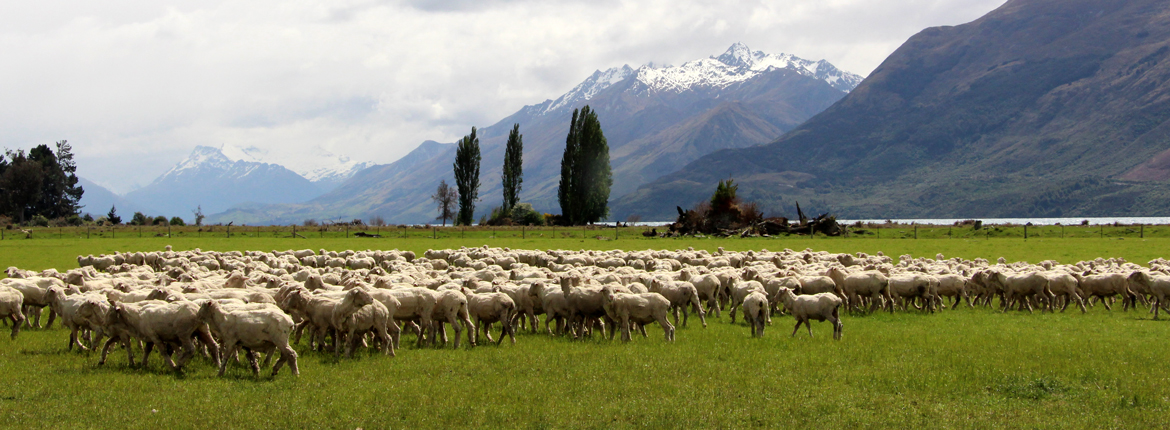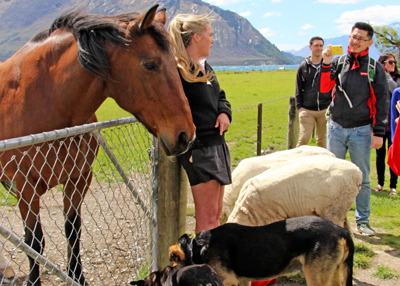
Visitors welcome
Shearing the rural love
Spending time on a farm is special. It’s something we New Zealanders might take for granted; if you know a farmer or know someone who knows a farmer, you can probably arrange a visit.
But if you don’t know any farmers, how do you access that mysterious land? How do you get through the gate?
We took the option of joining tourists. Mt Nicholas Station, on the shores of Lake Whakatipu and a glorious 40 minute boat ride from Queenstown, is a farm that welcomes guests. Tourists from all corners of the globe, including New Zealanders, pay to spend time there.
We were greeted at the station’s wharf by Emily and dogs Belle, a border collie and Khan, a big goofy huntaway. In a cluster we wandered across a paddock – under a big, wide, open sky – to meet Lucky the sheep, who shadowed us for the rest of the tour, a big old horse called Chester, a shaggy red heifer and – from a distance – pigs. They don’t name the pigs.
The station has been in this family for 40 years and runs 29,000 merino sheep and 2,500 Hereford cattle. We heard how, being so isolated, the farm is self-sufficient. They grow all their vegetables, eat beef, pork and eggs produced on the property and generate their own power.
Emily told us about the shepherds, who break in their own horses, look after their own dogs, kill the meat they need when they’re out on solo musters. The autumn muster can take six weeks. It’s a rare way of life these days.
And then we lean on a wire fence and watch as Belle and Khan, following Emily’s whistles and calls, round up a flock of sheep. They gather and move and shift about like a cloud in high wind.
This land is perfect for merino sheep, we’re told. They eat highly-nutritious tussock that grows well at this altitude and in these temperatures. We look up and around to the surrounding hills, golden with tussock.

A short walk and then we’re standing in the massive wooden shearing shed, with its classic raised board design and evocative smells of accumulated woolly business. It’s surprising, in this old-fashioned setting, to learn that each sheep has an ear tag with a microchip storing information such as their lineage and age.
Lucky the pet sheep has donated his fleece for this lesson in wool production. We pull at the bits, feel the strength of the fibre, see the crimps in it that create the wool’s elasticity. While it’s living fibre those crimps help keep the sheep warm in winter and cool in summer, as the air blows through with ease.
Merino wool also has a lot of lanolin in it which helps protect the sheep from UV rays and keeps them waterproof.
The station produces around 120,000kg of wool each year and sells it to New Zealand clothing brand Icebreaker and to an Italian company that supplies Armani. I stop for a moment, strands of Lucky’s wool in my fingers, the view of mountains and the lake out the shearing shed doors, imagining a high-end Armani suit being tried on in a shop in Milan, Italy.
At the post-tour lunch, a feast of homemade goodness, the conversation is spirited, inspired and grateful. People from India, from the USA, from France – they’d never been to such a place, had no idea what was involved in the production of wool. How special, they said, to spend time on a real farm.
Reported by Kathryn Webster for our Autumn 2020 issue
